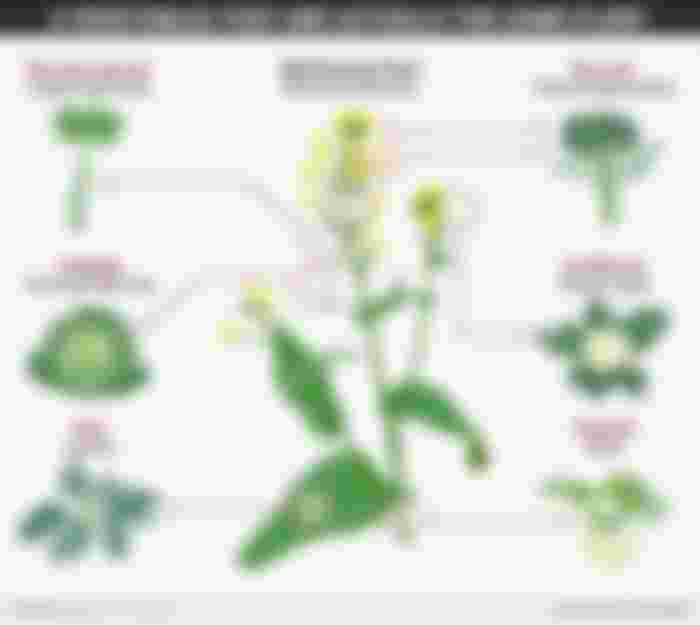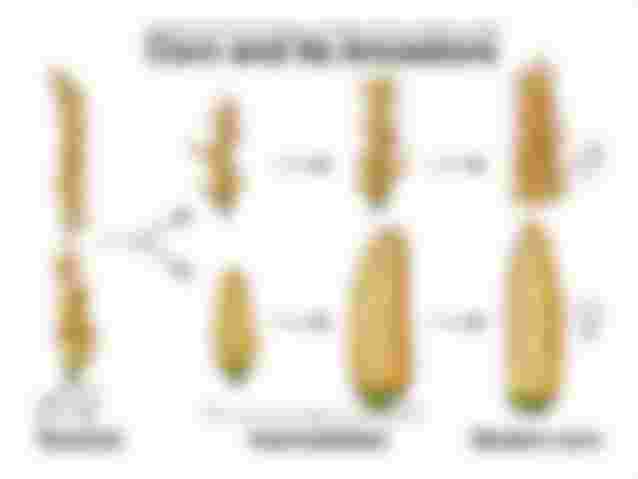
Achieving nutritious food security and food self-sufficiency has become a major goal of every country in today's world. Plant and animal breeding is one of the most scientifically based researches. How did such an important branch of science come into being and what was its history? Let's take a look at the world of plant genetics to learn how plant breeding can meet the human food needs as well as contribute to a variety of aesthetic fields through improved plant breeding.
What is plant breeding?
Plant breeding is basically a process of reproduction of plants with advanced genetic traits, through which new traits are transmitted among plants in the interest of mankind. In order to complete this process, all the plants that have the necessary economic and aesthetic genes are selected, the reproductive plants among the selected plants and only the plants that have the characteristics we need from their descendants are brought later. As a result of this process going on for many generations, the hereditary characteristics of the plants change. These plants also have an increased ability to survive in the natural environment compared to their ancestors.

Plant breeding is an industry as well as a science;
The process of evolution of plant species has been going on for thousands of years since the dawn of human civilization. At present, various government and non-government organizations around the world are conducting plant breeding activities with the help of advanced technology. According to various international development agencies, new plant varieties must be invented to ensure future food security. Walter R. In his 1987 book, Principles of Cultivator Development, Faher said:
"Plant breeding is a combination of industry and science for the genetic improvement of plants."
This means that we can improve plants in a scientific way, not just by breeding plants; Through this, an artistic aspect also emerges. Generations of different types of flowering plants and ornamental plants are currently being created, where there is no shortage of artistic patterns.

The beginning of agrarian society in Egypt took place thousands of years ago;
But scientific research on the subject began in the late nineteenth century, when Mendel published his findings on genetics. More sophisticated and complex studies on plant breeding began in earnest over the last 30 years, with the increasing application of various new biotechnologies.
# The birth of modern genetics
Modern genetics originated in the hands of Gregor Johann Mendel, the man whose discovery in the advancement of biology gave mankind the magical ability to change the characteristics of plants or animals or to add new features.

Gregor Johann Mendel, researching the garden in the artist's brush;
In 1857, Mendel began a multi-year project to explore the pattern of heredity. Although he began his research on rats, he later began researching bees and plants. Eventually he erected his initial model with peas.
Mendel began his work with seven distinct characteristics of peas, including tree height, flower color, seed color, and seed size. He began work on two different forms of each feature for research; For example, tall vs. short tall peas. He is pure breeding, i.e. those who produce offspring exactly like the mother plant; He nurtures the plants until he finds them and then monitors the heredity of the traits by breeding among them. Mendel found in his research
As seen after the crossing of the first generation, the long features of the plant obscure its short features. Mendel named the visible feature 'Dominant Trait' and the hidden feature 'Recessive Trait'.
In the case of the second generation, when they are self-fertilized, their hidden characteristics are revealed in very few plants. Notably, there are always approximately three trees expressing Dominant Trait (e.g., tall) and one tree expressing Recessive Trait (e.g., shorter); Which is creating a 3: 1 ratio.
Mendel further noted that traits are being transmitted independently from generation to generation; One feature such as plant height, another feature such as flower color or seed size is not affected.
"Plant breeding is a combination of industry and science for the genetic improvement of plants."
This means that we can improve plants in a scientific way, not just by breeding plants; Through this, an artistic aspect also emerges. Generations of different types of flowering plants and ornamental plants are currently being created, where there is no shortage of artistic
In 1865, Mendel published the results of his research on 3,000 pea plants at the local Natural History Society. He proposed a model of heredity from patterns obtained from his observations, collected data and various mathematical analyzes. The model was-
Different types of traits, such as flower color, plant height, seed size, etc., are controlled by a pair of hereditary factors.
One form (manifest) of a factor can obscure the presence of another form (latent).
The pairs of factors are separated during gamete formation, so that each gamete (sperm or egg) can randomly acquire any one factor.
Factors controlling various traits are independently transmitted through heredity.
In 1886 Mendel published his observations and his hereditary model in the National History Society of Brunei under the title 'Experiments in Plant Hybridization'. This is how modern genetics began and opened up a vast field of possibilities for the world.
# In the interest of mankind
Most of the fruits and vegetables we eat today are advanced breeds made through plant breeding. In fact, it is now difficult to identify the plant from which some of the most popular fruits and vegetables originated. Examples are cabbage, cauliflower, Brussels sprouts, broccoli or oleracea. These plants originated from a kind of wild yellow mustard tree. Carrots were initially yellow and purple, and watermelon came from a small, bitter-tasting fruit with very little resemblance to its current species.

So many vegetables originated from wild mustard trees;
Many changes have also taken place in the case of cereal plants, although it is now difficult to distinguish their different species from their ancestors. Corn originated from a tree called 'Teosinte', the stem of which was very different from the stem of modern corn - small and slender. And their cover was so hard that it could break human teeth. But now we are able to use many of these usable varieties for different purposes, just to develop new genetic traits in them.

Evolution of corn;
The sweet corn variety is made keeping in mind both its taste and appearance. Botanists are working to ensure that every corn stalk, juicy soft corn kernel, and its appearance look exactly like its taste. Popcorn is also an example of a completely different type of corn. Its hard shell and low soft starch make it a favorite movie-time snack.
Maize is also used to meet the food needs of the people as well as to meet various other needs.
🎋🎋🎋🎋🎋🎋🎋🎋🎋🎋🎋🎋🎋🎋🎋🎋





